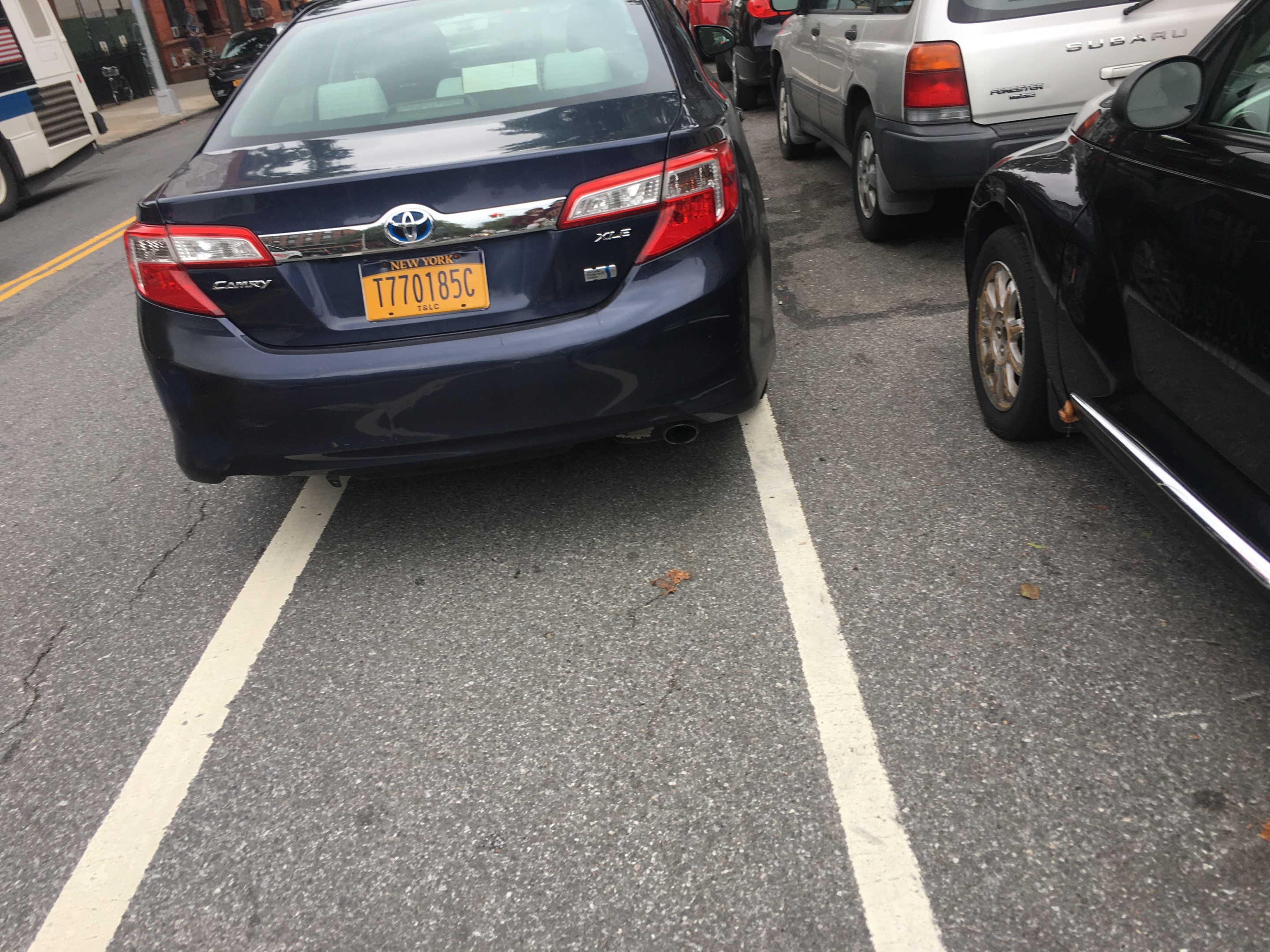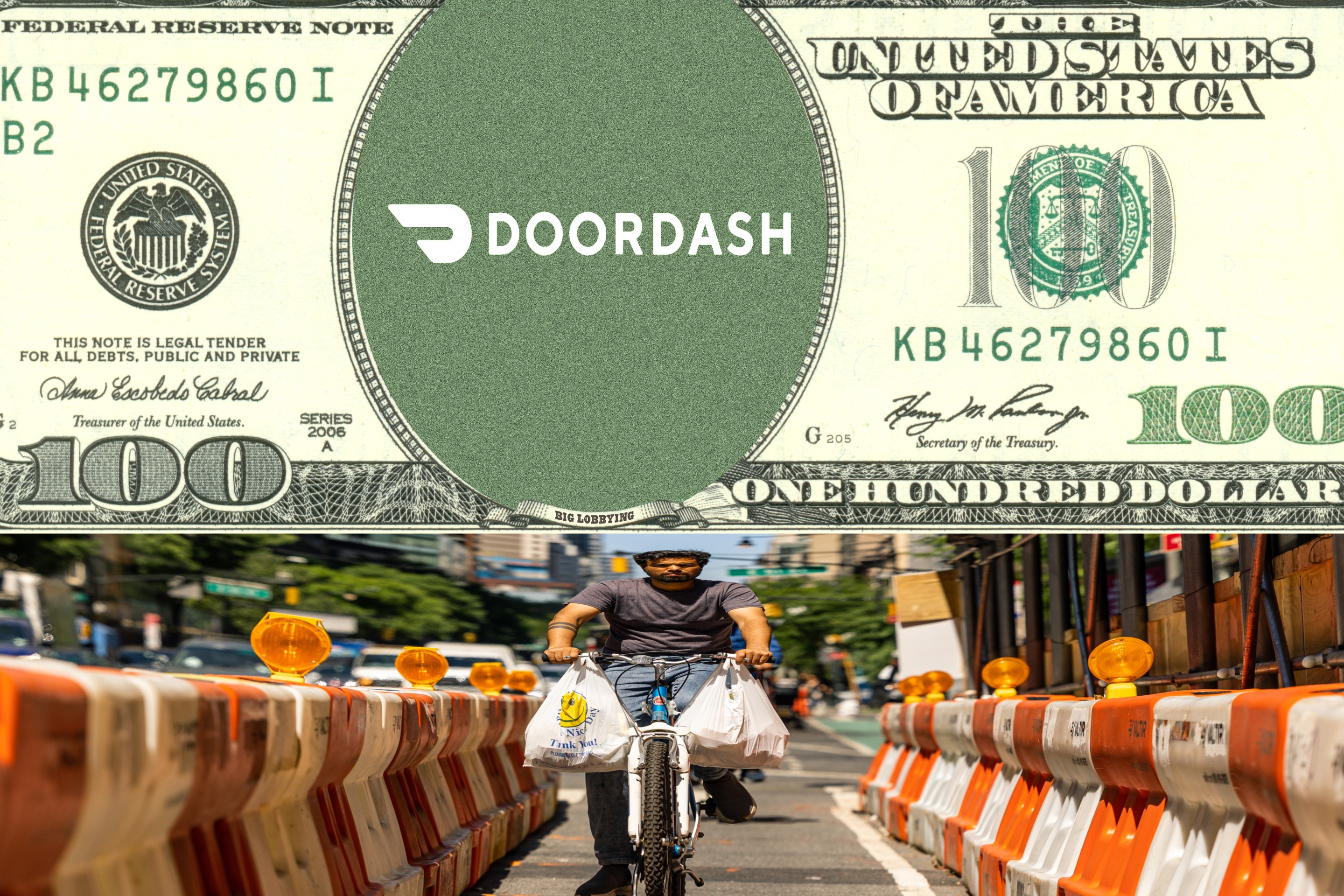Cycling needs a course correction.
One of the city's leading biking advocacy groups is calling for new Department of Transportation Commissioner Ydanis Rodriguez to redeploy his agency's vast resources to secure existing bike lanes, build better (not necessarily more) lanes, and increase efficiency — and, most of all, the new DOT boss should be more aggressive with other agencies that don't care enough about cycling.
But the first order of business is recognizing the city has a problem, the Jan. 7 letter from Bike New York to Rodriguez stated.
"The DOT bike program you inherit today is no longer a global leader or effective innovator," said the letter, written by the group's Director of Advocacy Jon Orcutt, a former city DOT official. "It is under-resourced and seems primarily concerned with executing projects designed to hit mileage targets, regardless of whether those projects promote bicycle use or street safety,"
Welcome to Cumbo Corners! This is the neighborhood that @cmlauriecumbo endangers by rejecting @NYC_DOT loading zones on behalf of a tiny group of drivers. As a result, every street in her neighborhood is unsafe. She was a big @ericadamsfornyc surrogate, so we wonder if he agrees. pic.twitter.com/fxhC9bhzoa
— Streetsblog New York (@StreetsblogNYC) June 29, 2021
The letter called for specific changes in the way the city goes about making cycling safer and, by extension, lifting its share of total trips from the pathetic 2 or 3 percent it is today to the double-digit mode share that former Mayor de Blasio claimed he was seeking.
Most important? Get every agency on the same page — and make sure that the page is from a cycling bible.
"City government has been remarkably incoherent with regard to its attitude toward bikes," the letter states. "During the de Blasio administration, every city agency seemed free to have its own policy toward bike lanes. The Mayor’s Media Office issues permits for film crews to park in bike lanes. The Health Department puts mobile vaccination units into bike lanes. Bureaucrats of every stripe use bike lanes as convenient parking spots for their too-numerous agency cars. The Police Department is a net negative force for safe and widespread use of bikes in the city — because police in New York are far more likely to park in bike lanes than to keep them clear of illegal parking." [And the letter didn't even mention how little the Parks Department does to encourage cycling.]
Horrific crash on 2nd Av “protected” bike lane as driver fails to yield and strikes cyclist. We have called 911 and are awaiting @FDNY EMS. @NYC_DOT pic.twitter.com/MazPb0Vldk
— Streetsblog New York (@StreetsblogNYC) December 10, 2020
"We need a Transportation Commissioner who is a vocal champion for the bike lanes DOT staff work so hard to create," the letter states. "DOT needs to stop being the apologetic, submissive low agency on the government totem pole and start asserting itself with regard to other city government institutions."
But specifically, DOT has the power to make significant changes on its own. These include:
- Designing bike lanes so they can't be blocked: Even today's protected lanes are "highly permeable to and chronically abused by cars and trucks." But there's a solution: "The way to keep special lanes clear of unwanted vehicles is to physically prevent their entrance." The letter cites a 2019 Hunter College study that revealed that even protected bike lanes are frequently blocked. "In every protected bike lane segment observed, they found more than one vehicular blockage (1.17 was the average)," the letter states.
- Pouring more concrete and create more loading zones: "Without concrete islands, the cross-hatched areas at turning lanes or other parts of intersections are routinely driven and parked in by motor vehicle drivers, creating terrible visibility conditions at protected bike lane intersections." This is particularly a problem because of the "ubiquity" of delivery trucks and taxis, both of which stop wherever their drivers want. "DOT’s pace of implementing curbside loading zones is nowhere close to addressing the current tidal wave of delivery and ride-hail activity and should be built into every street change the Department undertakes." (After being named as the new DOT chief, Rodriguez said he would bolster half of the city's weakest protected bike lanes in his first 100 days.)
- Stop measuring success the wrong way: Bike New York has long argued against mileage targets — "But we built 25 miles of protected bike lanes!" — because the resulting lanes still don't connect to other lanes or form a network that encourages a significant increase in cycling. "DOT should abandon bike lane mileage targets in favor of creating high quality bike infrastructure. That does not mean you should not extend protected bike lanes into communities that have so far been under-served by the city’s bike program. Instead, it is a call to focus on whether most bike riders will be able and willing to use the bike lane miles that you do implement. ... Implementation of these safe useable corridors would dovetail with Mayor Adams’s campaign promise to implement bike superhighways."
- Stop relying on paint: The city itself has acknowledged that painted bike lanes are basically double-parking lanes. So why build them? "Bike lanes that are merely paint are obsolete and mostly useless to New Yorkers on bicycles in today’s city," the letter stated. "They are a feature of American highway engineering practice that still largely fails to take bicycle transportation and safety seriously." DOT officials have said that painted lanes serve a "traffic calming" function, but Bike NY thinks the agency undermines that argument. "DOT will have more credibility if it pursues traffic calming measures without calling them 'bike lanes,'” the letter added.
- Showing some damn self-respect: Bike lanes are constantly blocked by construction crews, yet the DOT "seems continually taken by surprise by construction impacting the bike lane there. Why is this? Why aren’t forceful messages and disincentives being applied to the construction sector?" Bike New York also criticized DOT for long stretches of time between repaving roadways and repainting the bike lanes, as Streetsblog reported last year.
- Ending the practice of seeking community board approval: "Engage the boards for practical input on how, not whether, the city’s bike network will be implemented and how it will operate in each community district."
And then maybe, just maybe, we can reduce the increasing use of cars in an era when car use should be dropping. At the very least, improvements could counter the three-year trend of increasing road fatalities over which de Blasio presided as his second term ended.
"Our goal is for bicycling to become safer and a more widespread practice [in a city where] bicycle counts largely declined from 2016 to 2019," the letter said. "The de Blasio administration tried to claim that the recent bike boom was the result of implementation of more bike lanes, but we believe it has more to do with the public’s fear of riding public transit during the pandemic. Bike volumes at the city’s counters were already lower in 2021 from 2020. Better bike lane design and protected bike lanes that are attractive to all New Yorkers will be key to further growth."
The DOT declined to answer specific questions about the letter, and Bike NY said it has not received a substantive answer either. But DOT spokesman Seth Stein did say that Rodriguez "fully agrees that creating a world-class protected bike lane network is key to making our streets safer for all."
Stein added that Rodrigues would "take these recommendations into account.”
Stein did not answer the following questions:
Can the agency comment on these specific assertions in the letter:
- "The Police Department is a net negative force for safe and widespread use of bikes in the city — because police in New York are far more likely to park in bike lanes than to keep them clear of illegal parking.” Do you believe this is true or false?
- "DOT seems continually taken by surprise by construction impacting the bike lane there. Why is this?”
- The letter calls for “no more proposals or implementation for 6-foot-wide two-way bike lanes” and cites University Avenue as a narrow project that is underway. Is that true? Or has that project been altered to create at least an 8-foot wide bike lane?






